Imaginary Prisons
The Prisons (Carceri d'invenzione or Imaginary Prisons) is a series of 16 prints by the Italian artist Giovanni Battista Piranesi in the 18th century. They depict enormous subterranean vaults with stairs and mighty machines.
The images influenced Romanticism and Surrealism. While the Vedutisti (or "view makers"), such as Canaletto and Bellotto, more often reveled in the beauty of the sunlit place, in Piranesi this vision takes on what from a modern perspective could be called a Kafkaesque distortion, seemingly erecting fantastic labyrinthine structures, epic in volume. They are capricci, whimsical aggregates of monumental architecture and ruin.
The series was started in 1745. The first state prints were published in 1750 and consisted of 14 etchings, untitled and unnumbered, with a sketch-like look. The original prints were 16" x 21". Piranesi reworked the drawings a decade later.[1] For the second publishing in 1761, all the etchings were reworked and numbered I–XVI (1–16). Numbers II and V were new etchings to the series. Numbers I to IX were all done in portrait format (vertical), while X to XVI were landscape format (horizontal+). Though untitled, their conventional titles are as follows:
| First Edition (1750) | Second Edition (1761) | Descriptive title | Text |
|---|---|---|---|
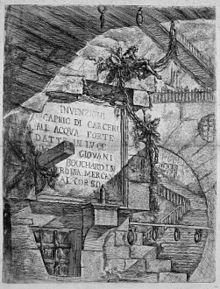 |
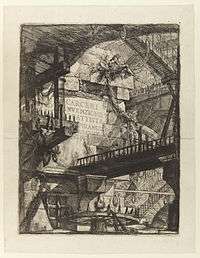 |
Title Plate | 1st: ‘’INVENZIONE CAPRIC DI CARCERI ALL ACQUA FORTE DATTE IN LUCE DA GOVANI BOUCHARD IN ROMA MERCANTE AL CORSO
2nd ’’CARCERI D’INVENZIONE DI G. BATTISTA PIRANESI ARCHIT. VENE’’ |
| (None) | 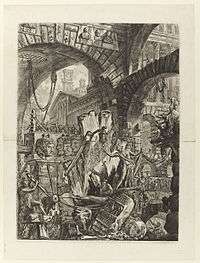 |
The Man on the Rack | L BARE…ORAN |
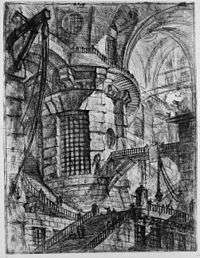 |
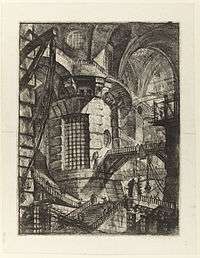 |
The Round Tower | |
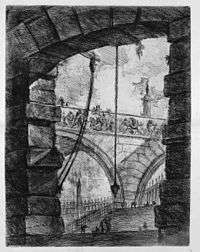 |
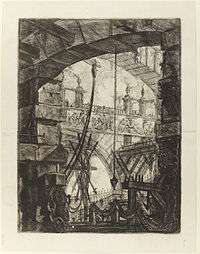 |
The Grand Piazza | |
| (None) | 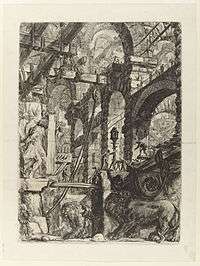 |
The Lion Bas-Reliefs | |
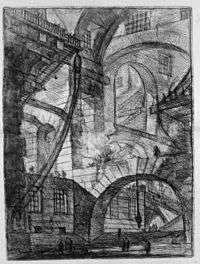 |
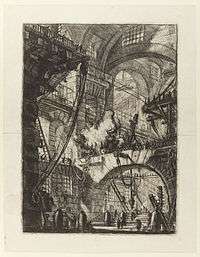 |
The Smoking Fire | |
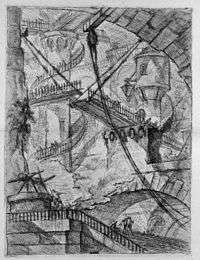 |
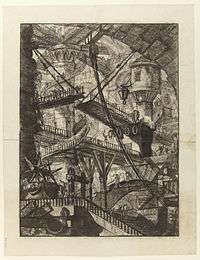 |
The Drawbridge | |
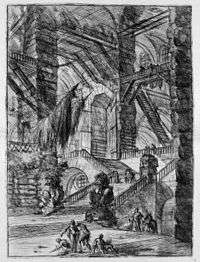 |
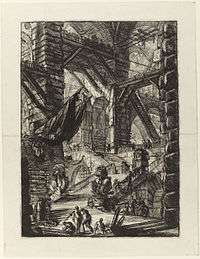 |
The Staircase with Trophies | (Illegible) |
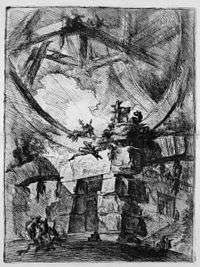 |
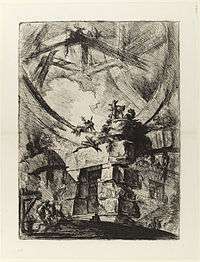 |
The Giant Wheel | |
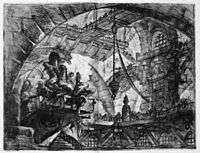 |
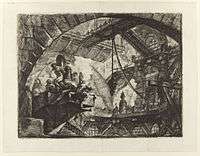 |
Prisoners on a Projecting Platform | |
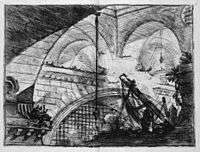 |
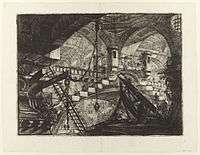 |
The Arch with a Shell Ornament | |
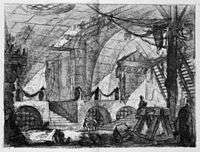 |
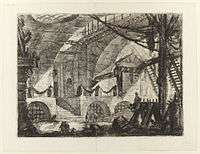 |
The Sawhorse | |
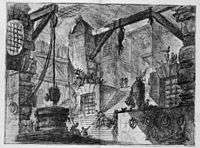 |
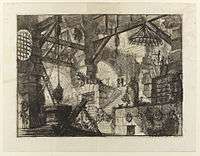 |
The Well | |
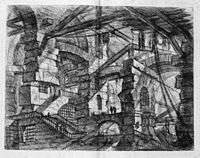 |
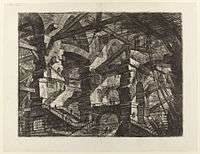 |
The Gothic Arch | |
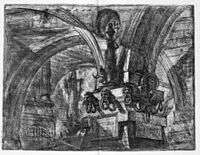 |
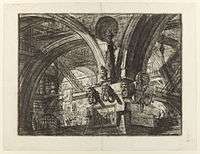 |
The Pier with a Lamp | |
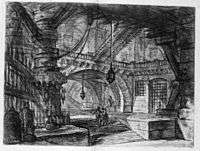 |
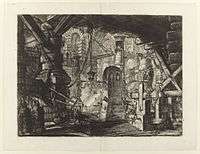 |
The Pier with Chains | 2ND: AD TERROREM INCRESCEN AUDACIAE; IMPIETATI ET MALIS ARTIBUS; INFAMES CEIUS RUNFELICIS SUSPE |
Thomas De Quincey in Confessions of an English Opium-Eater (1820) wrote the following:
Many years ago, when I was looking over Piranesi's Antiquities of Rome, Mr. Coleridge, who was standing by, described to me a set of plates by that artist ... which record the scenery of his own visions during the delirium of a fever: some of them (I describe only from memory of Mr. Coleridge's account) representing vast Gothic halls, on the floor of which stood all sorts of engines and machinery, wheels, cables, pulleys, levers, catapults, etc., etc., expressive of enormous power put forth, and resistance overcome. Creeping along the sides of the walls, you perceived a staircase; and upon it, groping his way upwards, was Piranesi himself: follow the stairs a little further, and you perceive it come to a sudden abrupt termination, without any balustrade, and allowing no step onwards to him.
In the second publishing, some of the illustrations appear to have been edited to contain (likely deliberate) impossible geometries.[2]
An in-depth analysis of Piranesi's Carceri was written by Marguerite Yourcenar in her Dark Brain of Piranesi: and Other Essays (1984). Further discussion of Piranesi and the Carceri can be found in The Mind and Art of Giovanni Battista Piranesi by John Wilton-Ely (1978). The style of Piranesi was imitated by twentieth-century forger Eric Hebborn.
References
- "BBC - Somerset - BBC Restoration man in Bath". www.bbc.co.uk. Retrieved 2020-06-19.
- ""Piranesi's Carceri as Inconsistent"". The University of Adelaide -- Inconsistent Images. November 2007. Retrieved 2017-09-06.